Giovanni Battista Tiepolo
Paintings
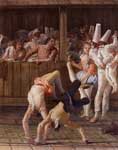
Pulcinella and the Tumblers
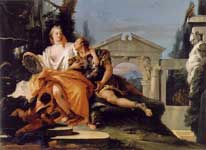
Rinaldo and Armida
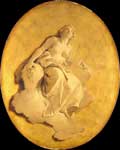
A Female Allegorical Figure
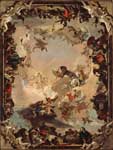
Allegory of the Planets and Continents
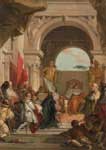
The Investiture of Bishop Harold as Duke of Franconia
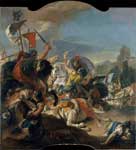
The Battle of Vercellae
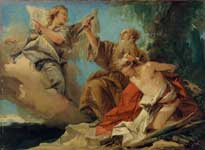
The Sacrifice of Isaac
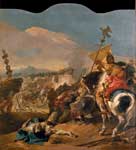
The Capture of Carthage
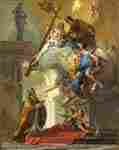
A Vision of the Trinity

An Allegory with Venus and Time

Four Saints

Rinaldo turning in Shame from the Magic Shield

Saints Maximus and Oswald

Seated Man, Woman with Jar, and Boy
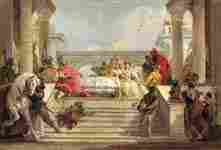
The Banquet of Cleopatra

The Virgin and Child appearing to a Group of Saints

Two Men in Oriental Costume

Two Orientals seated under a Tree
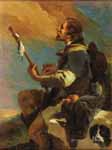
Saint Roch
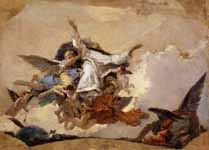
Sketch for The Glory of Saint Dominicó
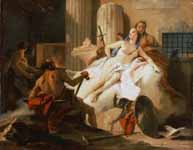
Sketch for Venus and Vulcanus
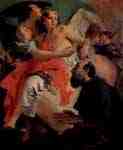
Abraham and the angels
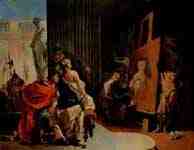
Alexander the Great and Campaspe in Apelles Studio
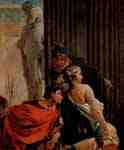
Alexander the Great and Campaspe in Apelles Studio , detail
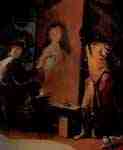
Alexander the Great and Campaspe in Apelles Studio, detail

Adoration of the Magi
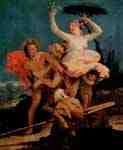
Apollo and Daphne

Apotheosis of the Pisani Family
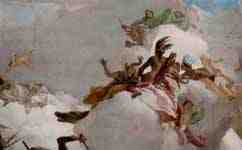
Apotheosis of the Pisani Family , detail
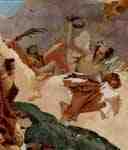
Apotheosis of the Pisani Family , detail
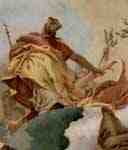
Apotheosis of the Pisani Family , detail
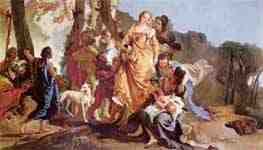
Finding of Moses
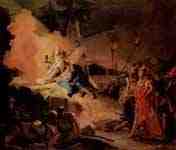
Christ on the Mount of Olives and the angel
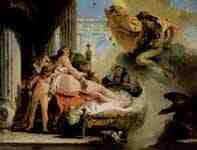
Danae and Zeus
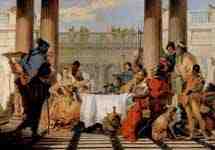
The Banquet of Cleopatra
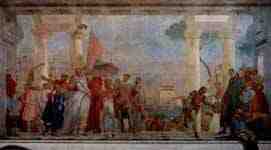
The reception of Henrich III .

The Pope Clement I prays to the Holy Trinity
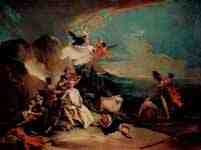
The Rape of Europa
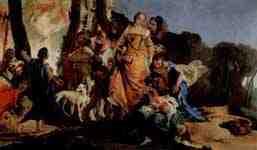
The Finding of Moses
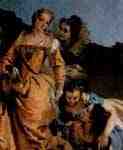
The Finding of Moses, Detail
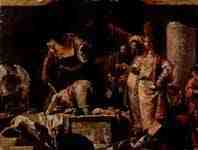
The Beheading of John the Baptist
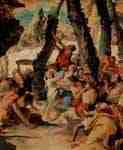
The harvest of God's blessing

The Immaculate conception
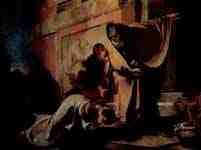
The Repudiation of Hagar
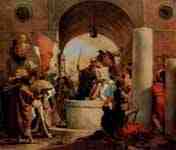
Crowning with Thorns

Apparition of the Virgin to St. Philip Neri ago

Education of Mary

Eteocles and Polynices
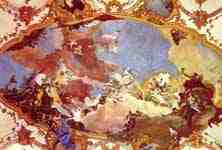
Würzburg: Friedrich Barbarossa and Beatrix of Burgundy
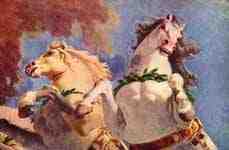
Würzburg : The Sun Horses of Apollo
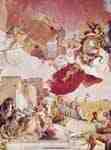
Würzburg: Europe
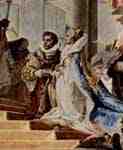
Würzburg : Frescoes in the imperial hall , detail
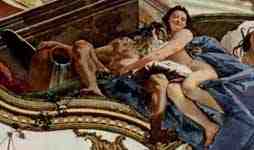
Würzburg : Frescoes in the imperial hall , detail
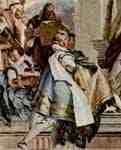
Würzburg : Frescoes in the imperial hall , detail
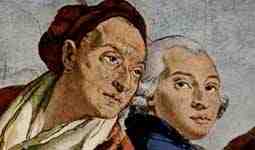
Würzburg : Frescoes in the stairwell , detail
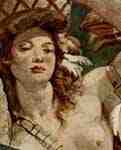
Würzburg : Frescoes in the stairwell , detail
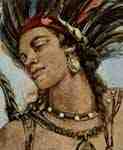
Würzburg : Frescoes in the stairwell , detail
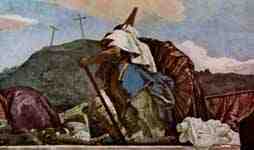
Würzburg : Frescoes in the stairwell , detail
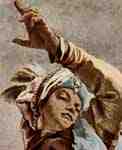
Würzburg : Frescoes in the stairwell , detail
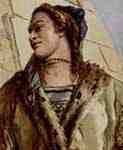
Würzburg : Frescoes in the stairwell , detail
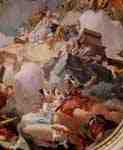
Apotheosis of the Spanish Royal Family
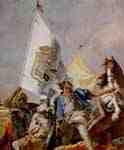
Praise of Spain , detail
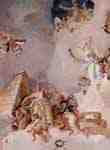
Praise of Spain , detail
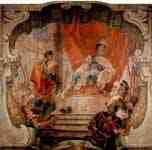
Scipio and the slave
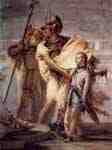
Villa Vallmarana : Aeneas presents Dido , detail
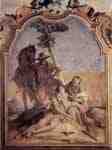
Villa Vallmarana : Angelica, accompanied by a shepherd
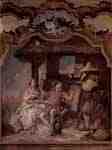
Villa Vallmarana : Angelica and Medorus
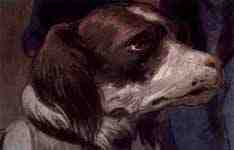
Villa Vallmarana : Greek fleet in Aulius , detail

Villa Vallmarana : Greek fleet in Aulius , detail
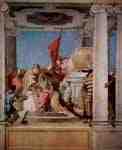
Villa Vallmarana : The Sacrifice of Iphigenia
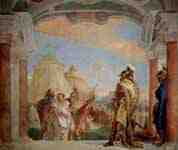
Villa Vallmarana : Agamenon and Briseiis
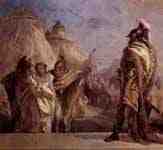
Villa Vallmarana : Agamenon and Briseiis , detail
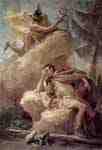
Villa Vallmarana : Mercury appears Aeneas
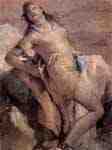
Villa Vallmarana : Minerva and Achilles
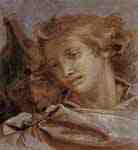
Villa Vallmarana : Rinaldo and Ubaldo
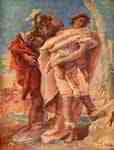
Villa Vallmarana : Rinaldo and the old warrior , detail
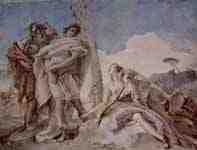
Villa Vallmarana : Rinaldo leaves Armida
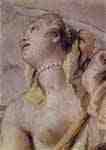
Villa Vallmarana : Rinaldo leaves Armida , detail
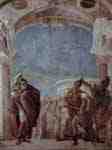
Villa Vallmarana : Ruggero freed Angelica , detail
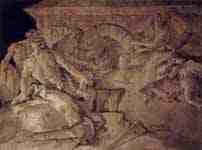
Villa Vallmarana : Venus Asks Vulcan for armor
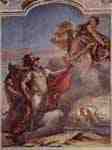
Villa Vallmarana : Venus leaves Aeneas and Acatus
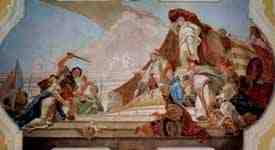
Bishop's Palace in Undine : Solomon's judgment
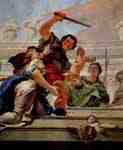
Bishop's Palace in Undine : Solomon's Judgement, detail
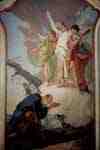
Bishop's Palace in Undine : Abraham and the angels
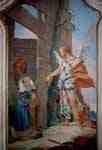
Bishop's Palace in Undine : Sarah and the Angel
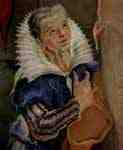
Bishop's Palace in Undine : Sarah and the Angel , detail
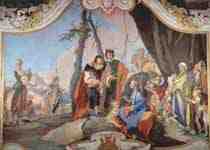
Bishop's Palace in Undine : Rachel hides the idols
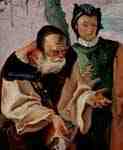
Bishop's Palace in Undine : Rachel hides the idols , detail

Hagar and Ishmael counterpart to " Abraham and the Angels "

Hannibal sees the head of Hasdrubal

St. Thekla Este freed from the plague
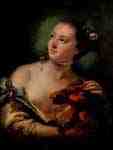
Young Woman with a Parrot
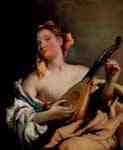
Young female singer with Mandolin
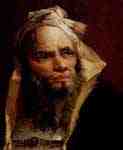
Head of an Oriental
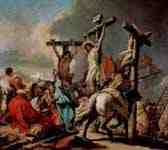
Crucifixion
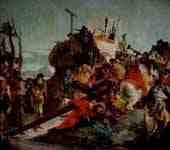
Way of the Cross of Christ to Calvary
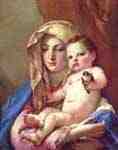
Madonna of the Goldfinch

Madonna with Saints
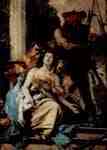
Martyrdom of St. Agatha
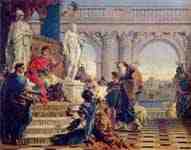
Maecenas Presenting the Liberal Arts to Emperor Augustus
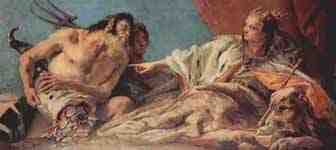
Neptune provides the city of Venice offerings
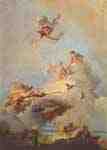
Olympus
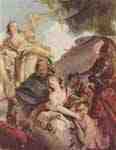
Sacrifice of Iphigenia
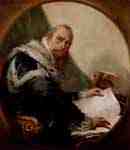
Portrait of Antonio Riccobono , fragment

Portrait of a duly authorized officer
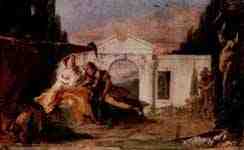
Rinaldo and Armida
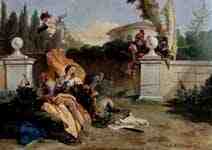
Rinaldo and Armida are surprised
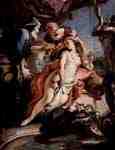
Susanna and the Elders
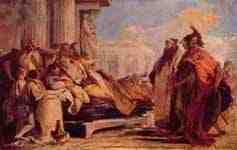
Death of Dido

Meeting of Marc Antony and Cleopatra
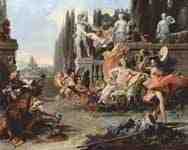
Triumph of Flora
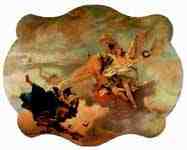
Triumph of Fortitude and the Sapienzia
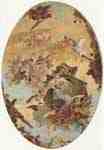
Transportation of the Holy House
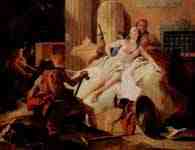
Venus and Vulcan
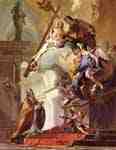
Vision of St. Clement
Drawings
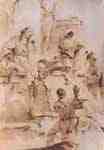
Adoration of the Magi
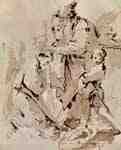
The Blessing
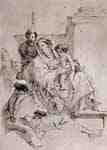
The Holy Family
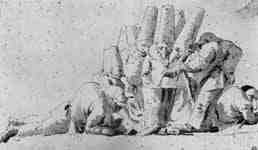
The Polichinelli Cooking
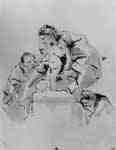
Holy Family

Head of a Woman
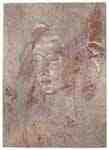
Head of a Young Woman
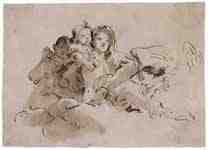
Madonna in the clouds
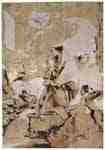
Annunciation
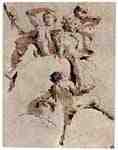
Four bacchanalian figures
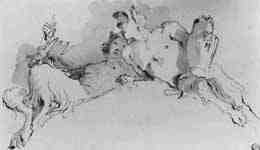
Two fauns
Giovanni Battista Tiepolo (March 5, 1696 – March 27, 1770), also known as Gianbattista or Giambattista Tiepolo, was a Venetian painter and printmaker. He was prolific, and worked not only in the region of Veneto or Venetia, one of Italy's twenty regions, but also in Germany and Spain.
Biography
Early life (1696–1726)
Born in Venice, Tiepolo was the youngest of six children born to Orsetta, Tiepolo's mother and his father, Domenico Tiepolo, a sea captain. While the Tiepolo surname belongs to a patrician family, Giambattista's father did not claim patrician status. The future artist was baptised in his parish church (San Pietro di Castello) as Giovanni Battista, in honour of his godfather, a Venetian nobleman called Giovanni Battista Dorià. His father Domenico died a year after his birth, leaving Orsetta in difficult financial circumstances.
Giambattista was initially a pupil of Gregorio Lazzarini, but the influences from elder contemporaries such as Sebastiano Ricci and Giovanni Battista Piazzetta are stronger in his work. At 19 years of age, Tiepolo completed his first major commission, the Sacrifice of Isaac (now in the Accademia). He left Lazzarini studio in 1717, and was received into the Fraglia or guild of painters.
In 1719, Tiepolo was married to Maria Cecilia Guardi, sister of two contemporary Venetian painters Francesco and Giovanni Antonio Guardi. Together, Tiepolo and his wife had nine children. Four daughters and three sons survived childhood. Two sons, Domenico and Lorenzo, painted with him as his assistants and achieved some independent recognition. His third son became a priest.
Early mature work (1726–1750)
A patrician from the Friulian town of Udine, Dionisio Delfino, commissioned a fresco decoration of the chapel and palace from the young Tiepolo (completed 1726–1728). Tiepolo's first masterpieces in Venice were a cycle of enormous canvases painted to decorate a large reception room of Ca' Dolfin on the Grand Canal of Venice (ca. 1726–1729), depicting ancient battles and triumph.
These early masterpieces, novel for Venetian frescoes in their luminosity, brought him many commissions. He painted canvases for churches such as that of Verolanuova (1735–1740), for the Scuola dei Carmini (1740–1747), and the Chiesa degli Scalzi (1743–1744; now destroyed) in Cannaregio, a ceiling for the Palazzi Archinto and Casati-Dugnani in Milan (1731), the Colleoni Chapel in Bergamo (1732–1733), a ceiling for the Gesuati (Santa Maria del Rosario) in Venice of St. Dominic Instituting the Rosary (1737–1739), Palazzo Clerici, Milan (1740), decorations for Villa Cordellini at Montecchio Maggiore (1743–1744) and for the ballroom of the Palazzo Labia, now a television studio in Venice, showing the Story of Cleopatra (1745–1750).
Tiepolo frescoes the Würzburg Residenz (1750–1753)
By 1750, Tiepolo's reputation was firmly established throughout Europe. That year, at the behest of Prince Bishop Karl Philip von Greiffenklau, he traveled to Würzburg where he resided for three years and executed ceiling paintings in the New Residenz palace (completed 1744). His painting for the grandiose Neumann-designed entrance staircase (Treppenhaus) is a massive ceiling fresco at 7287 square feet (677 m2), and was completed in collaboration with his sons, Giandomenico and Lorenzo.[1] His Allegory of the Planets and Continents depicts Apollo embarking on his daily course; deities around him symbolize the planets; allegorical figures (on the cornice) represent the four continents Europe, Asia, Africa and America. He included a self-portrait beside a portrait of his son Giandomenico in the Europe section of this fresco.[2] He also frescoed the Kaisersaal salon.
Return to Venice and Veneto (1753–1770)
Tiepolo returned to Venice in 1753. He was now in demand locally, as well as abroad where he was elected President of the Academy of Padua. He went on to complete theatrical frescoes for churches; the Triumph of Faith for the Chiesa della Pietà; panel frescos for Ca' Rezzonico (which now also holds his ceiling fresco from the Palazzo Barbarigo); and paintings for patrician villas in the Venetian countryside, such as Villa Valmarana in Vicenza and an elaborate panegyric ceiling for the now nearly-vacant Villa Pisani in Stra.
In celebrated frescoes at the Palazzo Labia, he depicted two frescoes on the life of Cleopatra: Meeting of Anthony and Cleopatra[1] and Banquet of Cleopatra,[2] as well as a central ceiling fresco depicts Triumph of Bellerophon over Time. He collaborated with an expert in perspective, Girolamo Mengozzi Colonna. Colonna who also designed sets for opera highlights the increasing tendency towards composition as a staged fiction in his frescoes. The architecture of theBanquet fresco also recalls Veronese's Wedding at Cannae. In 1757, he painted the altar piece commissioned by the family Thiene, the work represents the apotheosis of Saint Cajetan, the altar piece is in the church of hamlet of Rampazzo in the Camisano Vicentino.
Frescoes for the Royal Palace in Madrid
In 1761, Charles III commissioned Tiepolo to create a ceiling fresco to decorate the throne room of the Royal Palace of Madrid. The panegyric theme is the Apotheosis of Spain and has allegorical depictions recalling the dominance of Spain in the Americas and across the globe. In Spain, he incurred the jealousy and the bitter opposition of the rising champion of Neoclassicism, Anton Raphael Mengs.
Tiepolo died in Madrid on March 27, 1770.
After his death, the rise of stern Neoclassicism and the post-revolutionary decline of royal absolutism led to the slow decline of the Tiepolo style, but had failed to dent his reputation. By 1772, Tiepolo's son was sufficiently famous to be documented as painter to Doge Giovanni Cornaro, in charge of the decoration of Palazzo Mocenigo a San Polo.
Critical assessment and legacy
The Allegory of the Planets and Continents at New Residenz.
In his most fluid elaborations, Tiepolo has closest affinity to Ricci, Piazzetta, and Federico Bencovich. He is a shadowless fresco artist, a sunnier rococo Pietro da Cortona. His sumptuous historical set-pieces are enveloped in a regal luminosity. He is principally known for his fresco work, particularly his panegyric ceilings. These followed the Baroque tradition begun a century before by Pietro da Cortona, converting roof to painted sky, elevating petty aristocrats to divine status, and allowing for vast compositions that merged with the delicate ornamentation of the stucco frames. Like Luca Giordano, his palette was muted, almost water-color like. Like Giordano, he was prolific. With an unrivaled Sprezzatura, he painted worlds of fresco, and some such as the walls of Villa Valmarana in Vicenza, not only peer into the mythologic scenes, but are meant to relocate viewers into their midst. The earliest example of this is perhaps his canvases in the Ca' Dolfin, which allowed Tiepolo to introduce exuberant costumes, classical sculpture, and action that appears to spill from the frames into the room. Originally set into recesses, they were surrounded with frescoed frames.
While his painting is infused with the Venetian spirit, his luminosity is not seen in the previous masters; however, Tiepolo is considered the last "Olympian" painter of the Venetian Republic. Like Titian before him, Tiepolo was an international star, treasured by royalty far afield for his ability to depict glory in fresco.
His children painted figures with a design similar to that of their father, but with distinctive, including genre, styles.
References
1. ^ Michael Levey, Painting in Eighteenth-Century Venice, rev. ed., Cornell University Press, 1980, 225–230
2. ^ http://www.residenz-wuerzburg.de/englisch/residenz/treppe05.htm
Further reading
* Barcham, William L. (1992). Giambattista Tiepolo. Thames and Hudson. ISBN 0-500-08054-2.
* Rizzi, Aldo (1971). The etchings of the Tiepolos. Electa. ISBN 0714814997.
* Aldo Rizzi, Il Tiepolo all'Arcivescovado di Udine, Milano 1965.
* Aldo Rizzi, Tiepolo a Udine, Milano 1969.
* Aldo Rizzi, le acqueforti dei Tiepolo, Milano, 1970.
* Aldo Rizzi, La grafica del Tiepolo: le acqueforti, Milano 1971.
* Aldo Rizzi, La mostra del Tiepolo, Milano 1971.
* Aldo Rizzi, Giambattista Tiepolo, Milano 1990.
* Aldo Rizzi, I Tiepolo a Udine, Milano 1996.
Retrieved from "http://en.wikipedia.org/ ", Text is available under the Creative Commons Attribution-ShareAlike License
